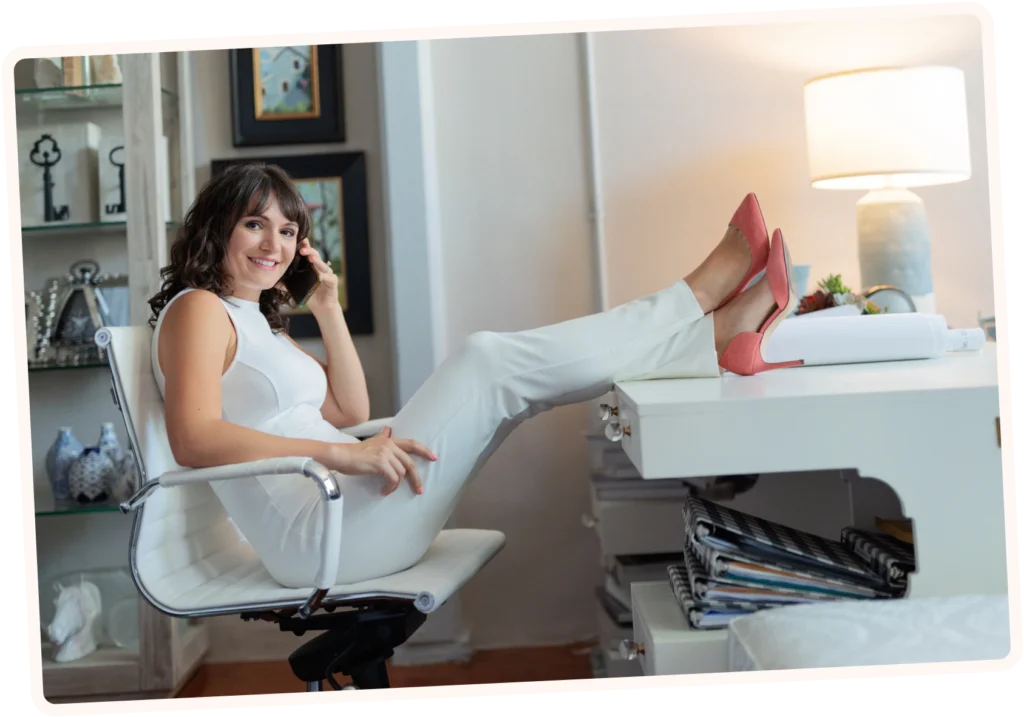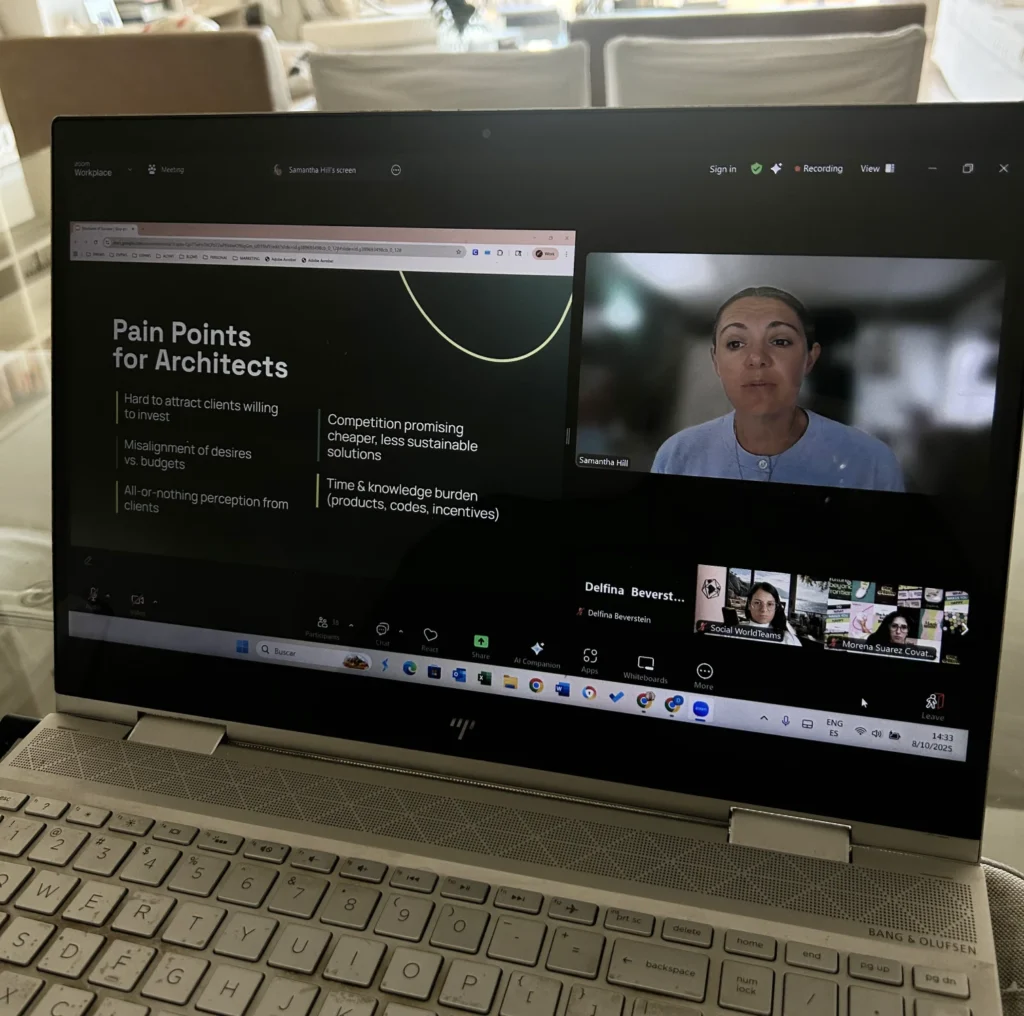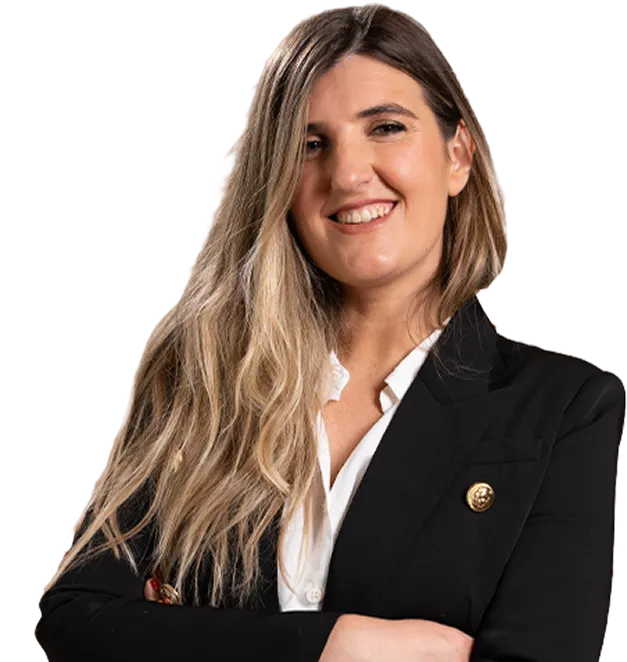Structure of Success:
Stop Pitching Sustainability the Wrong Way
How to Win Sustainable-Focused Clients.

A fresh take on how architects can turn sustainable values into business growth.
Hosted by Camila Brugger (CEO, WorldTeams) and Samantha Hill (Principal & Founder, Design with Skill), this conversation explored the art of communicating sustainability in a way that connects with what clients actually care about — value, performance, and long-term impact.
Whether you missed it or want to revisit the key ideas, here’s your recap of the strategies, examples, and mindset shifts that can help architects win more eco-conscious clients today.


“I imagine a world where everyone has a place they want to live, work, and play… where they belong and have opportunities.”
Samantha Hill
Principal and Founder of Design with Skill
Architect, educator, and founder of Design with Skill in Los Angeles, California, Samantha Hill is known for her community-driven approach to sustainable design. Her work blends technical excellence with human-centered values — always focusing on how spaces can create belonging and opportunity.

“When you want to sell an advantage, you need to phrase it in a way that fits in a brochure — in one Instagram story. Because that’s how clients buy.
Camila Brugger
CEO and Founder of WorldTeams
As CEO of WorldTeams, Camila helps U.S. architecture firms grow through global collaboration — connecting them with top Latin American talent and new marketing strategies that drive client impact.
Camila brought a marketing lens to the discussion, showing how architects can translate sustainable intentions into messages that resonate with decision-makers.
Key Takeaways
Translate sustainability into client language.
Architects often “preach” sustainability in terms of ideals — energy efficiency, materials, or ethics. But clients buy outcomes: comfort, savings, performance, and reputation. The key is reframing design features as tangible business benefits.
Adapt your message to the audience.
Homeowners, developers, and public institutions each have distinct motivations. A homeowner cares about comfort and monthly costs; a developer cares about market value; a city official cares about longevity and policy compliance. Learn to adjust your pitch accordingly.
Lead with ROI, risk, and results.
Numbers matter. When you tie design ideas to reduced operational costs, improved asset value, or lower risk exposure, sustainability stops being an “extra” — it becomes an advantage.
Simplify the message — smartly.
As Camila noted, “If you can’t say it in 10 seconds, your client won’t remember it.” Simplify without diluting. Use visuals, analogies, and plain English to make complex ideas easy to grasp.
Tell the story online.
Don’t wait for your dream project to showcase your values. Start sharing educational content that reflects your sustainable mindset. The right clients will notice — and reach out.
Did you miss the live event?
We’ve got you covered!
Cash flow wins arguments.

Camila Brugger,
CEO & Founder of WorldTeams
It’s not about greenwashing — it’s about good design that lasts.

Samantha Hill,
Principal of Design with Skill
Even if you don’t have your dream sustainable project yet, start by educating your audience. The right clients will find you.

Camila Brugger,
CEO & Founder of WorldTeams
Why This Conversation Matters
Sustainability is a business strategy. Clients are increasingly driven by performance, ESG goals, and future-proofing their investments.
For architects, that means the ability to communicate sustainability effectively can define whether you win or lose a project. This webinar showed that success isn’t about having the greenest portfolio — it’s about knowing how to frame your value in the language of results.
At WorldTeams, we believe great architecture starts with clear communication — between designers, clients, and the world.